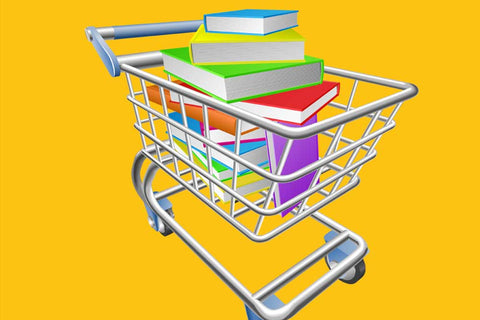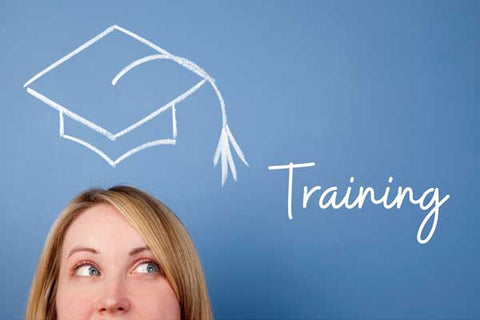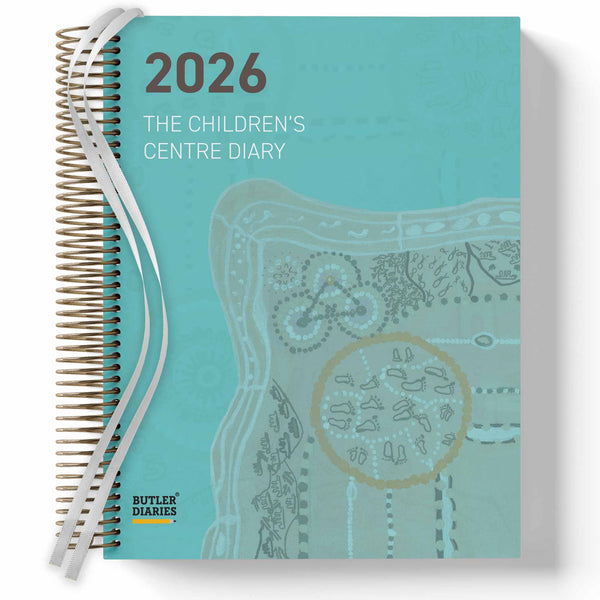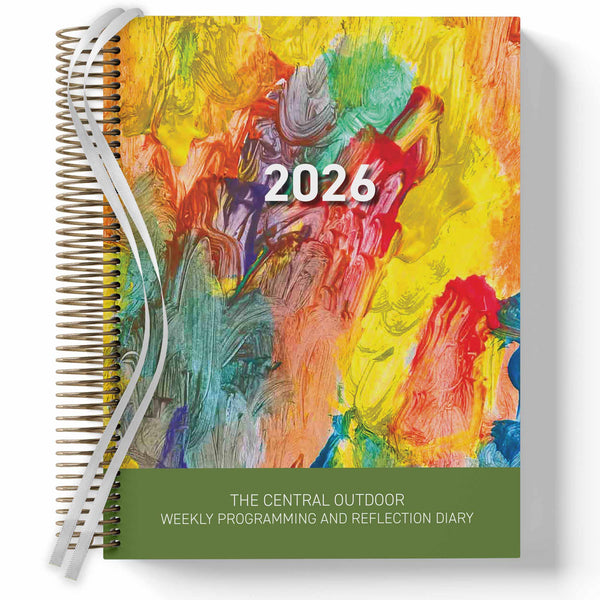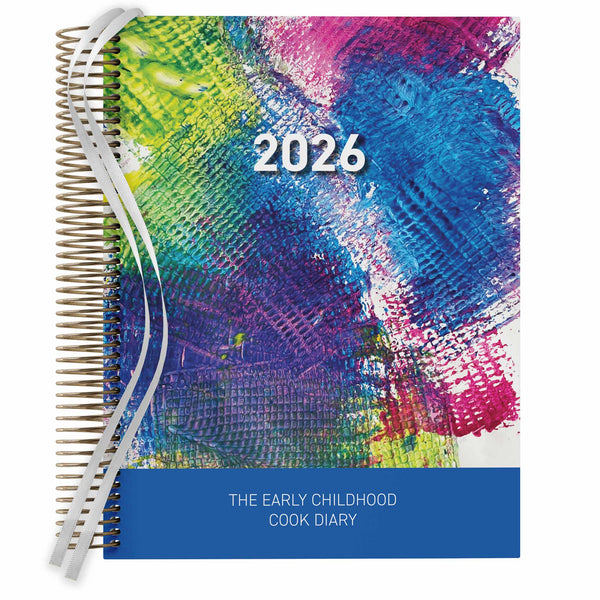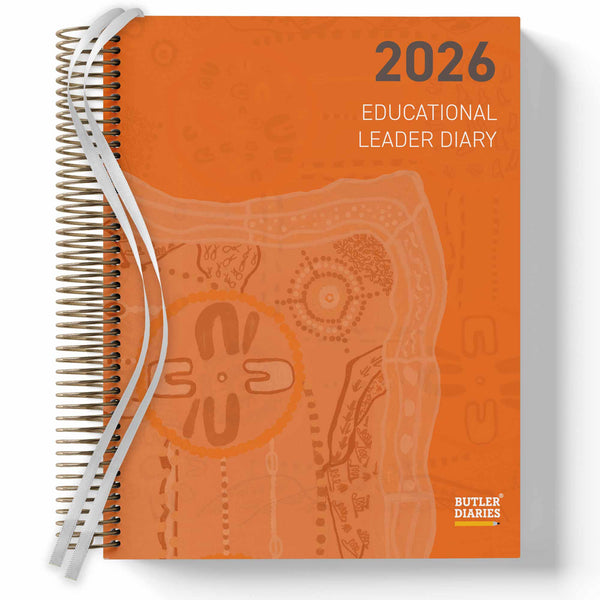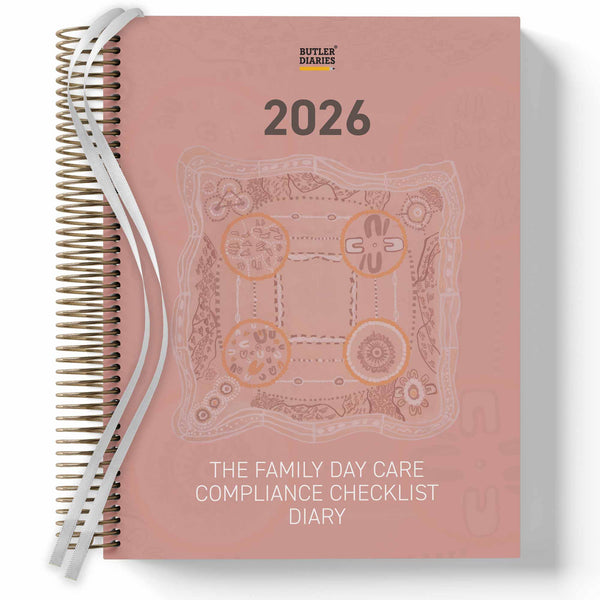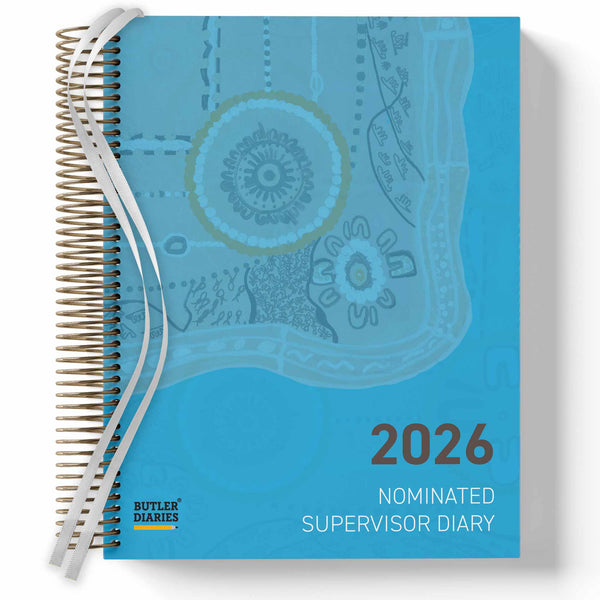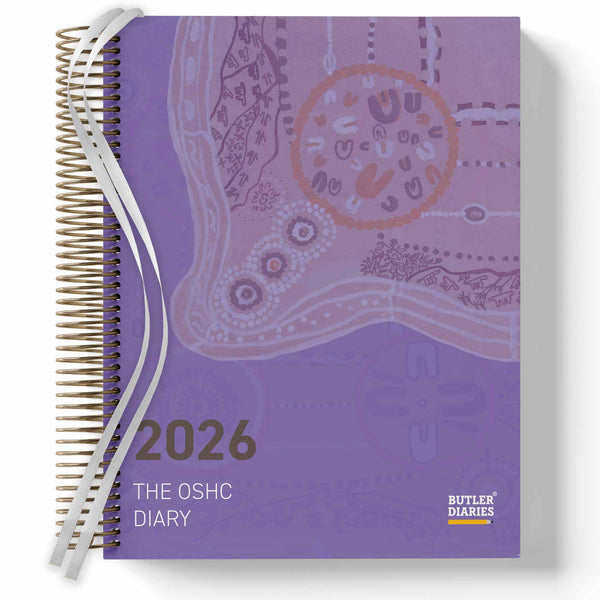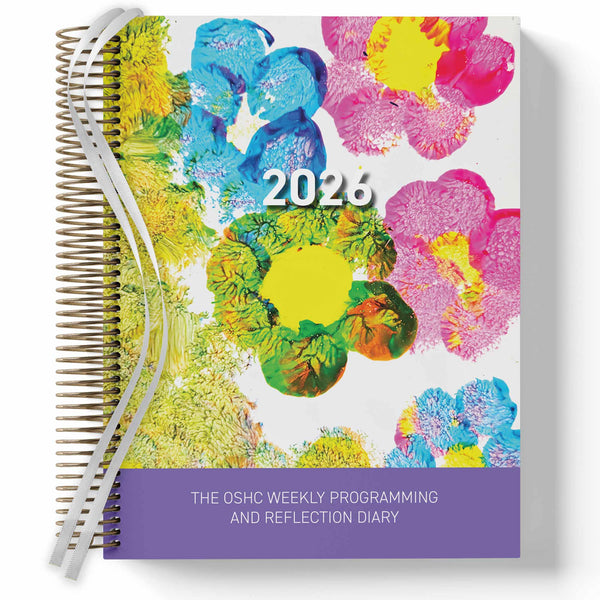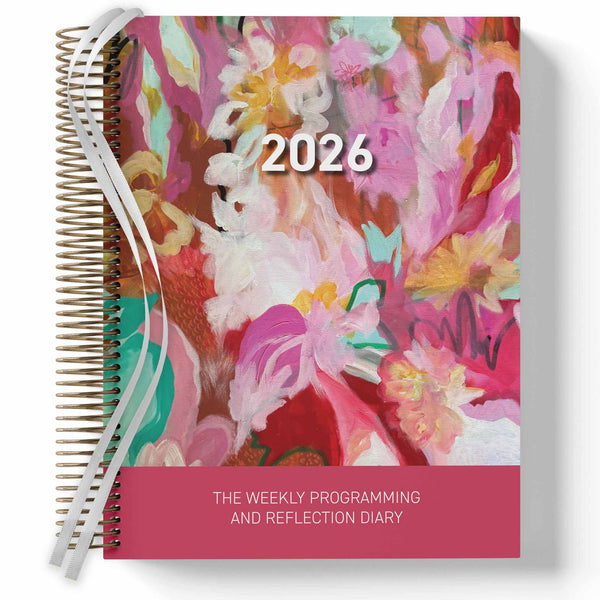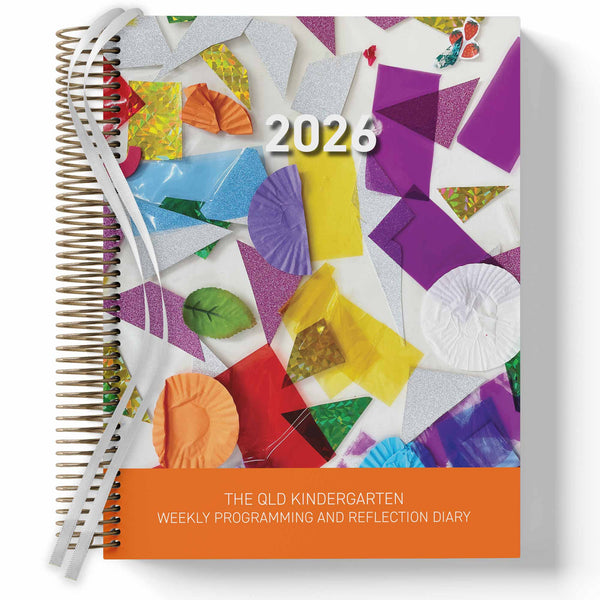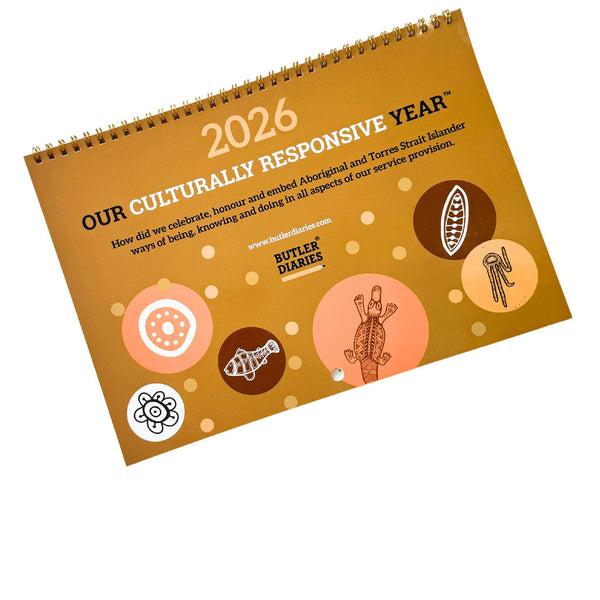Butler Buzz
-

Support Directories: Finding the Support You Need on Our Website
Finding support shouldn’t be a challenge. Our website brings everything you need into one place—from help using your diary, to professional development, to live assistance when you need a real person. Here’s a simple guide to where you can find support and what’s available to help you stay organised, confident, and connected in your ECEC practice.
-
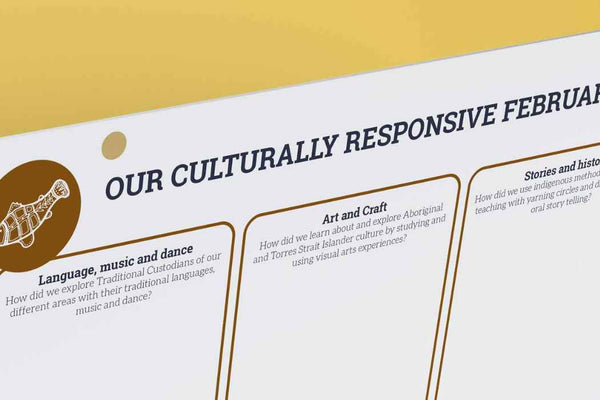
What to Document in the Culturally Responsive Calendar
Cultural responsiveness isn’t just a buzzword — it’s a foundational practice across EYLF and MTOP v2.0. The Culturally Responsive Year Wall Calendar helps educators embed First Nations perspectives into daily documentation with intention and purpose. This guide shows how to align the calendar with your existing diaries, meet NQS expectations, and make cultural learning visible, respectful, and ongoing.
-

Weekly Checklist in the FDC Combined Compliance Checklist and Programming Diary
One of the most practical features of the Family Day Care Combined Compliance Checklist and Programming Diary is the Weekly Learning Outcome Checklist that appears in the monthly programming spread. While it may look simple at first glance, it has been carefully designed to support both clarity in programming and compliance with learning frameworks such as the EYLF and MTOP V2.0.
-

A Student’s Guide to Using Butler Diaries while Studying
If you’re studying your Certificate III or Diploma in Early Childhood Education and Care, the right diary and planner can help you stay organised, meet placement requirements, and build professional skills. This guide walks you through the best Butler Diaries products for students, plus tips on how to use them effectively for study, programming, and reflections. Turn your diary into a powerful learning and career tool from day one.
-

How to Use Milestone Tracking for EYLF Compliance
Tracking developmental milestones is essential for meeting EYLF (Early Years Learning Framework) compliance in Australian early childhood education. It helps educators monitor a child’s growth across physical, cognitive, social, emotional, and language areas while aligning learning programs with EYLF outcomes. Here’s how you can effectively implement milestone tracking.
-

EYLF Compliance: Common Questions Answered
EYLF compliance can feel overwhelming, but it doesn’t have to be. This article breaks down the most frequently asked questions around EYLF V2.0, from what documentation is required to how it links with the National Quality Standard and the seven Quality Areas. It also touches on the upcoming child safety regulations taking effect from 1 September 2025—and what that means for your practice. If you’re unsure about how to demonstrate compliance or want to streamline your reflections and programming, this is a must-read.
-

Digital vs Paper Planners: Which Works Better?
When it comes to planning, early childhood educators in Australia face a tough choice: digital or paper planners. Both have pros and cons, and the right option depends on your workflow, compliance needs, and personal preferences. Here's a quick breakdown...
-
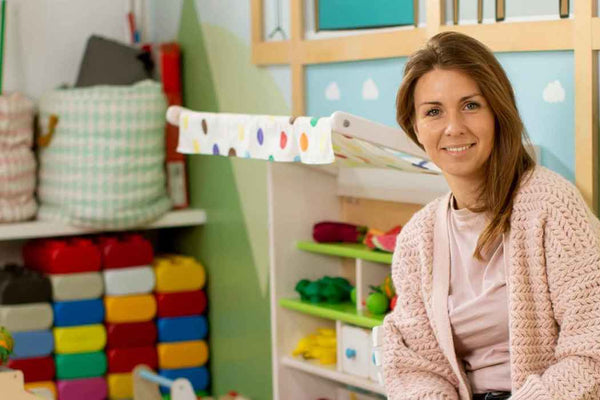
The Multifaceted Role of the Children’s Centre Diary: A Communication Hub and Quality Improvement Tool
How the Children's Centre Diary captures many roles across different teams — one powerful tool to lead, reflect, and stay connected. From Centre Directors to Room Leaders to the whole team, the Diary has become more than a planner. Here’s how different roles in your centre can use the Children's Centre Diary to keep everything — and everyone — on the same page.
-

How to Create Effective Daily Reflection Journals
Daily reflection journals help early childhood educators in Australia evaluate their teaching methods, track children's progress, and meet compliance standards like the EYLF and NQS. They improve teaching quality, support professional growth, and strengthen family-educator connections. Here's how you can start...
-

5 Essential Planning Tools for Early Childhood Educators
Planning in Early Childhood Education doesn’t have to feel like a juggling act. This article explores five essential tools that help educators stay organised, meet compliance, and reclaim their time. From visual diaries to digital templates and wall calendars, each tool is designed to simplify your workflow while supporting meaningful, child-led learning.
-
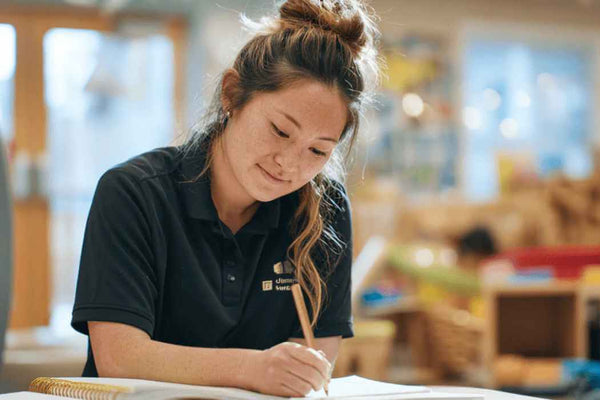
Comparing MTOP and EYLF Programming Requirements
Both EYLF V2.0 and MTOP V2.0 aim to support children’s learning and development—but they do so in ways that reflect the unique needs of different age groups. While EYLF focuses on play-based learning for children aged birth to five, MTOP is designed for school-aged children and highlights autonomy, peer relationships, and leisure. Understanding the similarities and differences between these frameworks helps educators tailor their programming, meet compliance requirements, and better support the children in their care.
-

Documenting Developmental Milestones and Interests in Early Childhood Education
In this article, we explore why documenting both developmental progress and interests matters, and share practical, real-world strategies for collecting and recording this vital information.
-

A Closer Look at the Learning Data/Jottings Reflection Box in Your Programming Diary
It’s easy to record observations and then move quickly onto the next experience. But what truly deepens our practice is what we do with that information. The Learning Data or Jottings space in your diary isn’t just a placeholder for notes—it’s a tool for meaningful reflection, insight, and intentional planning. Used thoughtfully, it becomes the bridge between what was and what could be, allowing you to refine your practice, respond to children’s evolving interests, and ensure every child’s voice is heard.
-
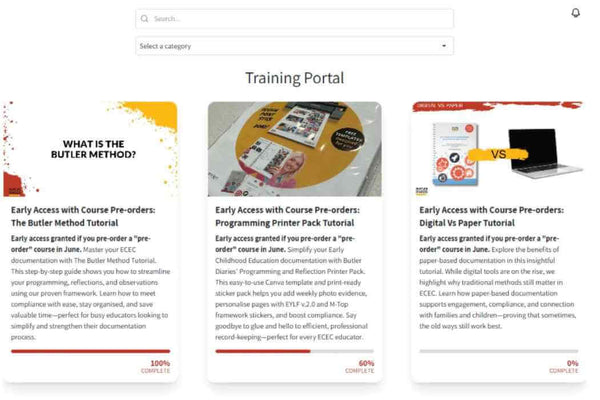
Training Portal Guide and FAQs
The Butler Training Portal has been developed as another avenue of support for our customers. Here's everything you need to know...
-

50 ways to use a notebook as an early childhood educator
Your educator notebook is an absolute ESSENTIAL in ECEC, and now you can enjoy stunning guest artist educator notebooks that match your Educator Diary. Here are 50 ways to use your notebook to help clear your mind and keep you on track.
-

Tips for Using the Monthly Programming and Reflection Spread in the Family Day Care Combined Compliance Checklist and Programming Diary
Tips for Using the Monthly Programming and Reflection Spread in the Family Day Care Combined Compliance Check and Programming Diary
-

Tips for Using our Central Outdoor Weekly Programming and Reflection Diary
Tips for Using our Central Outdoor Weekly Programming and Reflection Diary - Updated 2025
-

What If They’re Not Interested? Supporting Children’s Voice in Planning
One of the core principles of Early Childhood Education and Care is listening to and responding to children’s voices. But what happens when those voices aren’t clear—or when children seem disengaged, disinterested, or just not giving you anything to go on? This is a common challenge for educators, especially when trying to create meaningful, child-led programs that reflect the EYLF v.2.0’s emphasis on agency and identity. Here’s how to support and capture children’s voices—even when they’re quiet.
-
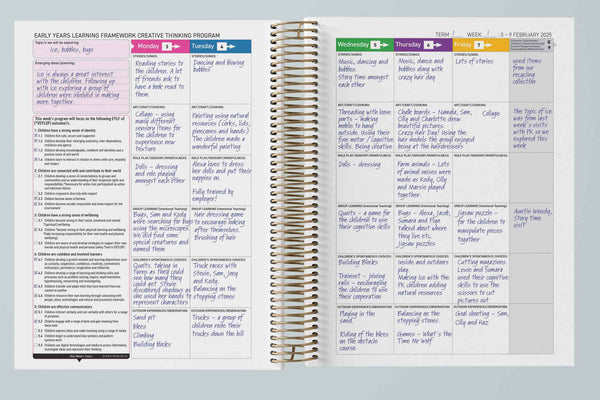
EYLF v.2.0: 5 Small Changes That Make a Big Difference
The good news? You don’t need to overhaul your programming to align with the updated framework. These five small changes can have a big impact—both in compliance and, more importantly, in the quality of learning experiences for children.
-

What Does Cultural Responsiveness Actually Look Like in Practice?
Cultural responsiveness is more than a buzzword in Early Childhood Education and Care; it’s a core principle under EYLF v.2.0. While many educators understand the importance of celebrating diversity, the practical application often feels vague or tokenistic.
So, what does it really mean to be culturally responsive?
-
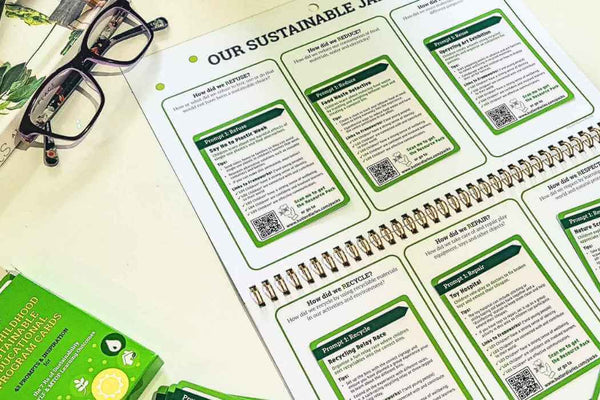
Embracing the 7 Rs of Sustainability in Early Childhood Settings
Sustainability in early childhood education isn't just about recycling—it's about nurturing a mindset that supports care for our environment, community, and future generations. The 7 Rs of Sustainability—Respect, Reduce, Reuse, Recycle, Repair, Refuse, Reflect—offer a holistic and empowering approach to embed sustainable practices in daily routines, fostering environmentally responsible citizens from the earliest years.
-

How Do I Fit Everything In? Time-Saving Tips for Programming and Documentation
Educators often find themselves balancing the demands of programming, observations, family communication, and spontaneous learning—all while nurturing the development of young children. One of the most frequent pain points we hear is: "How do I fit everything in?" This article offers realistic, time-saving strategies for educators who want to stay on top of their documentation without compromising the quality of their interactions with children.
-

A Guide to Learning Trajectories in Early Childhood Education
Learning trajectories are a research-based framework that outlines the progression of children’s development across key learning areas. They describe how children typically learn and grow in different domains and provide educators with a roadmap to support each child’s journey... check out how they can help you.
-
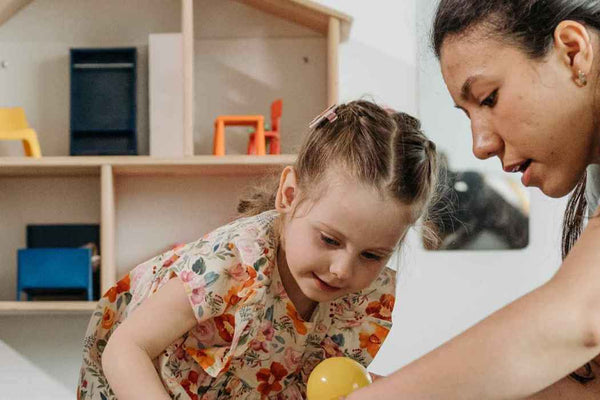
Does the Whole Service Need to Use the Same Programming Method?
"Does our entire service need to use the same programming method?" The short answer is no—but consistency, collaboration, and alignment with the Early Years Learning Framework (EYLF) v2.0 are key factors to consider.
-

How to Use Butler Diaries' Programming Tools for Minimum Documentation but Maximum Compliance
It is easy to identify one of the biggest strains on Early Childhood Educators... Paperwork. With constant updates to frameworks and regulations and no clear, straight forward answer on what needs to be documenting, services often end up over-documenting in order to try to meet their compliance requirements.
-

Understanding the EYLF Practices in Early Childhood Education and Care
EYLF outlines the EYLF Practices that guide educators in their decision-making. Understanding these practices ensures that educators create meaningful, engaging, and inclusive learning environments that foster children's holistic growth.
-

Understanding the EYLF Principles in Early Childhood Education and Care
EYLF is the foundation of early childhood education in Australia. Central to this framework are the EYLF Principles, which provide a strong foundation for high-quality education and care. Understanding these principles is essential for educators to create meaningful learning experiences that support children's holistic development.
-

Does your Programming Diary Support Critical Reflection?
Reflection is a key practice in ECEC, helping educators assess and improve their teaching strategies, interactions, and environments. However, there is a distinct difference between reflection and critical reflection—both are important, but critical reflection goes deeper, prompting meaningful change and professional growth. By using Butler Diaries, educators can structure their reflective practice and ensure they are engaging in ongoing critical reflection. Let’s explore the differences between reflection and critical reflection and how to use your Diary effectively.
-

How to Do Programming in Childcare: A Comprehensive Summary Using EYLF v.2
Programming in ECEC involves creating and implementing a curriculum that supports children’s learning and development. It's essential to align your programming practices with the new standards to ensure high-quality education and care. Here's a breakdown to support you.
-

Empowering Children's Voices: The 'Children's Voices Diary' from Butler Diaries
In Early Childhood Education and Care (ECEC), fostering children's agency is a fundamental principle of the Early Years Learning Framework (EYLF) and My Time, Our Place Framework (MTOP). Encouraging children to express their thoughts, feelings, and reflections not only builds their confidence but also strengthens their sense of belonging and identity. The Children’s Voices Diary from Butler Diaries has been designed with this in mind, providing an engaging and structured way for children to document their experiences, thoughts, and aspirations. See how this Diary can foster children's development, learning, and overall wellbeing, as well as support your program.
-

Top 5 Programming Methods for Early Childhood Education and Care
Effective programming in Early Childhood Education and Care (ECEC) is essential for ensuring quality learning experiences and meeting the diverse needs of children. With the introduction of EYLF v.2.0, educators are increasingly seeking structured yet flexible programming methods that support documentation, critical reflection, and compliance. Here, we count down the top five programming methods, culminating in the best solution for early childhood professionals.
-
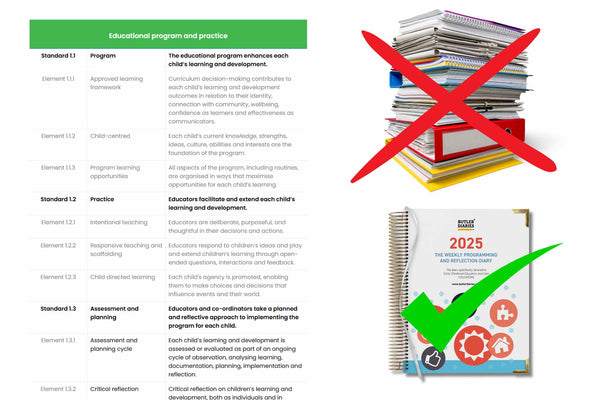
Streamlining and Reducing Duplication in Documentation
Documentation plays a crucial role in Early Childhood Education and Care (ECEC), enabling educators to track and reflect on children's learning. However, misconceptions about documentation requirements under the National Quality Framework (NQF) can result in unnecessary administrative burdens and educator burnout. Understanding regulatory obligations and adopting efficient documentation practices can help streamline processes and reduce duplication while still meeting compliance requirements.
-
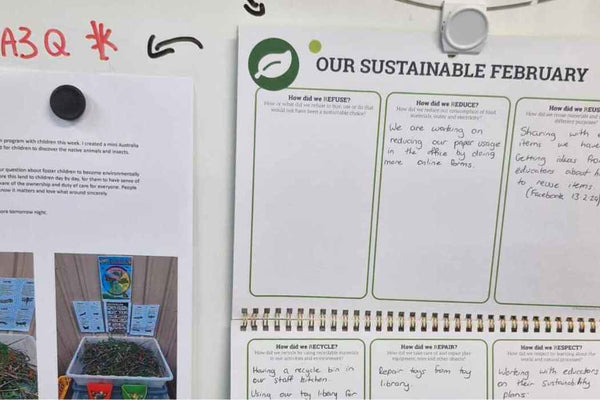
The Three Dimensions of the Sustainability Principle: Embedding and Documenting in the Early Years
EYLF V2 introduces 'Sustainability' as a core principle, encompassing environmental, social, and economic dimensions. Here we break down the Sustainability principle and how to document it.
